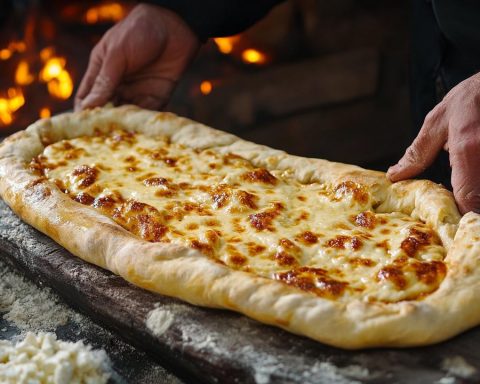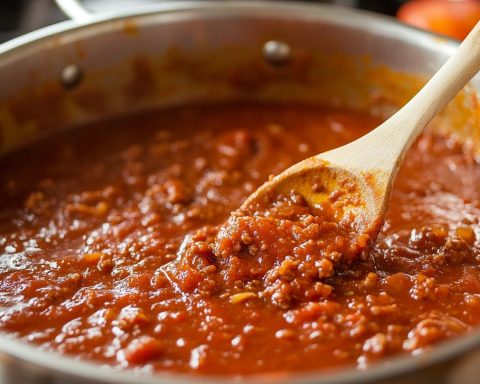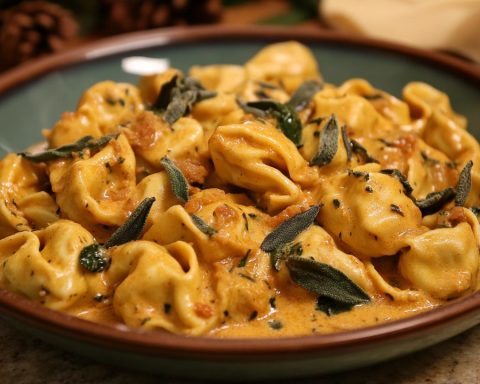There’s something profoundly comforting about the aroma of freshly baked cheesecake wafting through the home. Embarking on this culinary journey means embracing the centuries-old charm of Estonian desserts, and Ricotta Kohupiimakook is a refined example of such when tradition meets flavor. This cheesecake isn’t your average dessert; it is adorned with the silky, creamy touch of ricotta cheese, offering a slightly different take on the classic Kohupiimakook known in Estonia for its rich cottage cheese base.
Steeped in a sense of nostalgia, Ricotta Kohupiimakook is a dish that carries the warmth of familial gatherings and festive celebrations. With its light and airy texture, touched by a hint of lemon and vanilla, it is a delightful choice for brunches, teatime indulgences, or an elegant conclusion to dinner parties.
Ingredients:
– For the Crust:
– 200g crushed digestive biscuits or graham crackers
– 100g unsalted butter, melted
– 1 tbsp sugar
– Pinch of salt
– For the Cheesecake Filling:
– 500g ricotta cheese
– 250g cream cheese, softened
– 150g granulated sugar
– 3 large eggs
– Zest and juice of 1 lemon
– 1 tsp vanilla extract
– 2 tbsp all-purpose flour
– Pinch of salt
Instructions:
1. Prepare the Crust:
– Preheat your oven to 180°C (350°F). Grease a 23cm (9-inch) springform pan lightly with butter.
– In a mixing bowl, combine the crushed biscuits, melted butter, sugar, and a pinch of salt. Mix until the crumbs are well-coated, resembling wet sand.
– Press the mixture firmly into the bottom of the prepared springform pan to form an even crust. Bake in the preheated oven for 10 minutes until golden. Remove and let cool.
2. Make the Cheesecake Filling:
– In a large bowl, blend the ricotta and cream cheese together until smooth. Gradually add the sugar, continuing to beat until the mixture is creamy.
– Incorporate the eggs one at a time, ensuring each is fully mixed before adding the next. Stir in the lemon zest, lemon juice, and vanilla extract.
– Sprinkle the flour and salt over the mixture and fold gently until incorporated.
3. Assemble and Bake:
– Pour the prepared filling over the crust, smoothing the top with a spatula.
– Place the cheesecake in the oven and bake for 50-60 minutes, or until the edges are set but the center remains slightly wobbly. Turn off the oven, leave the door ajar, and allow the cheesecake to cool slowly for about an hour.
4. Chill and Serve:
– Once cooled to room temperature, refrigerate for at least 4 hours, preferably overnight, to allow the flavors to meld and the texture to firm up beautifully.
– Gently remove the cheesecake from the springform pan, slice, and serve.
Cooking Tips:
– For a burst of freshness, top the cooled cheesecake with a drizzle of berry coulis or a handful of fresh berries.
– To achieve a perfectly smooth texture, ensure all your dairy ingredients are at room temperature before mixing.
– If you crave a nutty touch, add a handful of chopped almonds or hazelnuts to the crust mixture for extra depth.
Serving Suggestions and Pairings:
This Ricotta Kohupiimakook pairs beautifully with a glass of chilled Moscato d’Asti or a robust espresso, enhancing the luscious creamy notes with complementary flavors. Whether served at a cozy family dinner or a sophisticated gathering, this cheesecake promises to impress and delight, making each slice a memorable moment.
The Untold Story of Ricotta Kohupiimakook: Estonia’s Dessert Gem
While Ricotta Kohupiimakook may enchant the senses with its comforting aroma and creamy texture, what many may not know is the captivating history and cultural significance behind this classic Estonian dessert. Dating back centuries, the original Kohupiimakook was a staple in rural Estonian households, primarily consumed during harvest celebrations and festive occasions. Its simple yet flavorful ingredients made it accessible to all, regardless of social status.
But what makes Ricotta Kohupiimakook stand out? The inclusion of ricotta cheese—a deviation from its traditional cottage cheese base—adds a delicate sumptuousness and depth while preserving its authentic roots. This fusion of flavors has sparked curiosity among culinary enthusiasts seeking a fresh twist on a classic recipe.
Did you know? In Estonia, desserts like Kohupiimakook often involved community participation, with family and friends gathering to share recipes and techniques. Such events fostered a sense of unity and cultural continuity across generations.
Controversy in the Kitchen? Some purists argue that the adaptation of ricotta cheats on the original recipe, urging chefs to remain true to the traditional variant. However, many supporters praise its ability to broaden appeal beyond Estonia’s borders, bringing a timeless dish to international recognition.
Frequently Asked Questions
– Why use ricotta instead of cottage cheese? Using ricotta imparts a silkier texture and a milder flavor that aligns with diverse palates, offering a harmonious blend of creaminess and lightness.
– Can I use other citrus fruits? Yes! Experiment with orange or lime zest for different fruity notes.
For more delicious insights and recipes, visit BBC Food or Bon Appétit.








